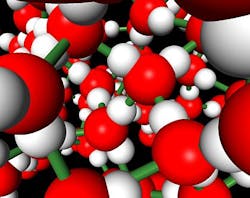DARPA to define manufacturing process for molecules in sensors, chemicals, and materials
ARLINGTON, Va., 26 July 2013. Scientists at the U.S. Defense Advanced Research Projects Agency in Arlington, Va., are approaching industry to find ways of easily engineering biology for advanced sensing capabilities, chemicals, materials, and therapeutics.
DARPA on Friday issued a solicitation (DARPA-BAA-13-37) for the Living Foundries: 1000 Molecules project to develop a biology-engineering infrastructure for the U.S. Department of Defense (DOD) and for the engineering biology community.
DARPA seeks to create a first-of-its-kind infrastructure comprising tools and processes that to help with innovation across several applications, and to help push biotechnology forward. The infrastructure will include design algorithms, genetic integration methodologies, and flexible assay systems.
Each center involved in th program will produce at last 350 unique molecules of relevance to DOD that will augment today's limited set of chemical building blocks.
Biologically produced molecules are more useful than traditional approaches, DARPA researchers say. DARPA would like proposals for rapid design and prototyping centers, and officials say they expect to award several types of rapid design and prototyping infrastructure contracts spanning a range of approaches.
The rapid design and prototyping infrastructure should bridge the gap from initial, laboratory-level, proof-of-concept experimentation to industrial pilot production.
Key technical components will include computers to link component technologies; design tools to engineer novel biosynthetic pathways, gene cluster discovery, and chemical structure prediction; methods for automated construction of genetic designs; design evaluation tools to enable massively parallel testing, analysis, validation, and verification of engineered systems; and feedback tools with high-volume data generation.
Ultimately, rapid design and prototyping facilities should consist of computational and physical infrastructure supporting design, fabrication, validation and quality control, and analysis, the totality of which should be tightly coupled to algorithms for design and processing.
DARPA 1000 has three challenge areas: rapid, improved prototyping of known molecules; prototyping of known, but currently inaccessible, molecules; and prototyping of novel molecules.
Proposers must identify and justify classes of molecules proposed for each challenge area. The program also will have two task areas: an initial infrastructure; and a capabilities demonstration.
At the program’s end, each facility will have produced at least 350 distinct molecules, including at least 45 known, but currently inaccessible, molecules and at least 10 completely novel molecules.
DARPA will brief industry on the Living Foundries: 1000 Molecules during an industry day on 24 July 2013 at the Residence Inn by Marriott, 650 N. Quincy St., in Arlington, Va. More information on the industry day is online at https://safe.sysplan.com/confsys/1000m/.
Companies interested should respond no later than 17 Sept. 2013. For questions or concerns email Program Manager Alicia Jackson [email protected].
More information about the program is online at http://www.fbo.gov/index?s=opportunity&mode=form&id=b756b30c85f1cac1f670609dcc33ea6c&tab=core&_cview=0.

